Urge Incontinence: Symptoms, Causes, and Treatment
Urge incontinence is one of the most common forms of incontinence, characterized by a sudden and intense need to urinate that leads to involuntary urine loss. Millions of women worldwide suffer from this condition as it significantly affects their quality of life.
Symptoms of Urge Incontinence
Main Symptoms
Symptoms of urge incontinence include:
- Sudden and intense need to urinate: The urge appears suddenly and is difficult to control
- Frequent urination: More than 8 times per day
- Nocturia: Frequent awakening at night to urinate (more than once)
- Involuntary urine loss: Especially when immediate access to a toilet is not possible
Additional Indications
Other signs that may be observed:
- Difficulty inhibiting urination once it starts
- Feeling of incomplete bladder emptying
- Discomfort or pain during urination
Causes and Risk Factors
Main Causes
Overactivity of the bladder is the main cause of urge incontinence.
Risk Factors
Risk factors for incontinence include:
- Urinary tract infections
- Chronic cystitis
- Menopause and decreased estrogen
- Diabetes and glucose disorders
- Gender: Women are affected more
- Obesity: Additional pressure on the bladder
- Smoking: Chronic cough and irritation
- Heredity: Family history
- Certain medications: Diuretics, caffeine
Diagnosis of Urge Incontinence
Clinical Examination
The diagnosis of incontinence requires taking a detailed history and clinical examination:
Medical History
- Detailed recording of symptoms
- Voiding diary for 3 days
- List of medications and medical conditions
Laboratory Tests
- General urine examination
- Urine culture
- Post-void residual measurement
Specialized Tests
- Urodynamic study: essential examination for diagnosis
- Cystoscopy: Visual examination of the bladder interior
- Imaging studies: Ultrasound study
Treatment Options
Conservative Treatment
Lifestyle Modification
Treatment of incontinence begins with simple methods:
- Bladder training: Scheduled urination times, gradual increase of intervals between urination, urination interruption techniques
- Dietary changes: Limiting caffeine, alcohol, and spicy foods
- Weight control: Reducing pressure on the bladder
Pharmacological Treatment
Pharmaceutical options target controlling bladder spasms:
- Anticholinergics (Oxybutynin, Tolterodine, Solifenacin): reduce nerve stimulation of the bladder
- Mirabegron: β3-adrenergic agonist, which increases bladder storage capacity, with usually good tolerance
- Botulinum toxin type A: In resistant cases, intravesical injection of botulinum toxin type A can offer significant relief. The procedure is performed in a specialized office and usually has a temporary duration (6-9 months)
Prognosis
The therapeutic methods for urge incontinence have very good results. Approximately 80% of patients are cured or significantly improved.
Prevention and Management Measures
- Maintaining healthy weight: Reducing pressure on the bladder
- Avoiding irritating factors: Caffeine, alcohol, artificial sweeteners
- Immediate treatment of urinary tract infections
- Control of diabetes and other chronic conditions
- Information about drug side effects
Impact on Daily Life
Urge incontinence can affect:
- Social activities: Avoiding outings and meetings
- Work performance: Frequent interruptions and anxiety
- Emotional health: Depression and low self-esteem
- Sleep: Frequent awakenings and fatigue
Early diagnosis and intervention are key to improving prognosis. Long-term management requires regular monitoring and adjustment of treatment according to symptom progression. Cooperation with a specialized urogynecologist and adherence to therapeutic guidelines are essential for maintaining positive results.
Kostis Nikolopoulos will responsibly guide you to the appropriate therapeutic option.
Book Appointment





